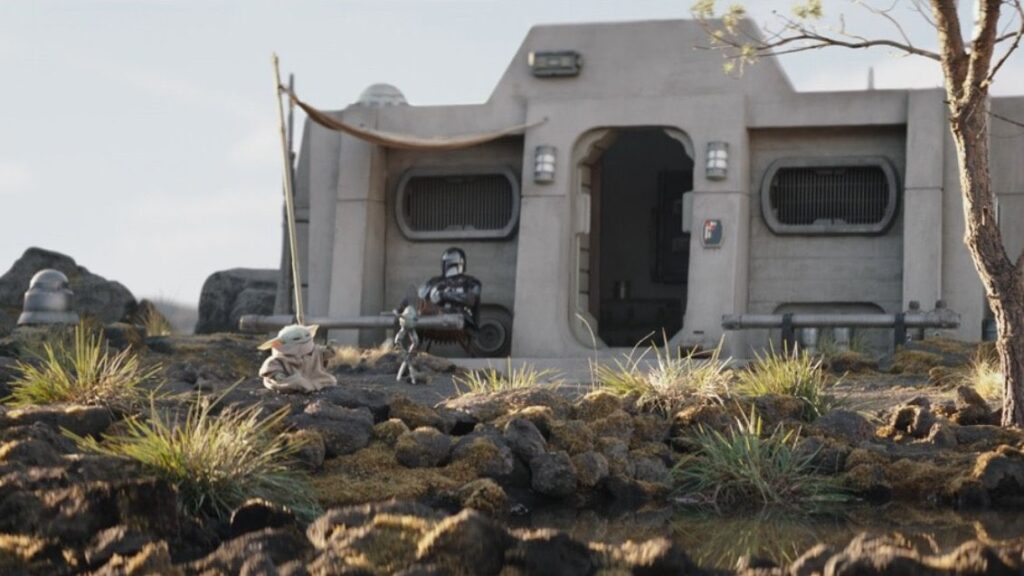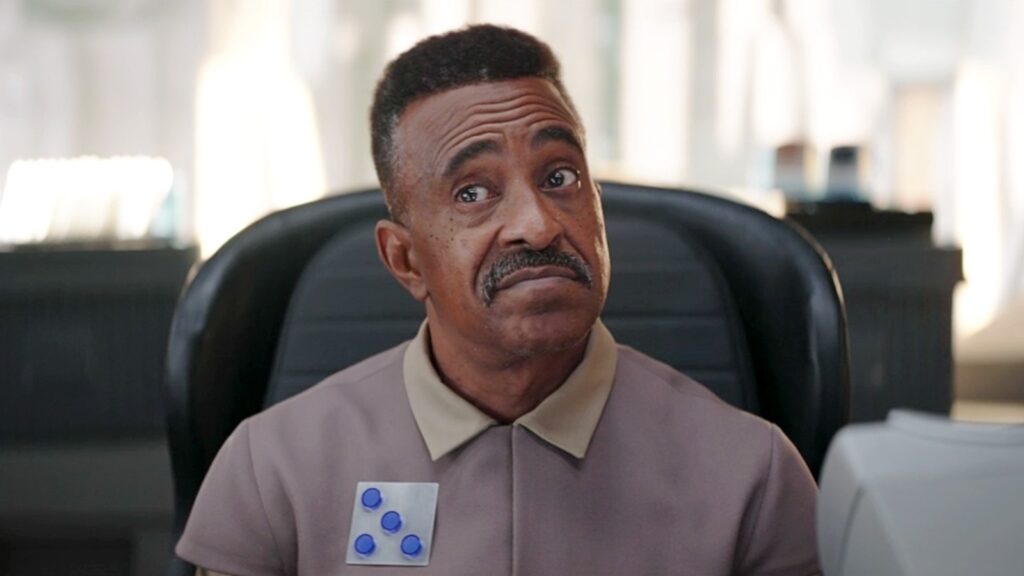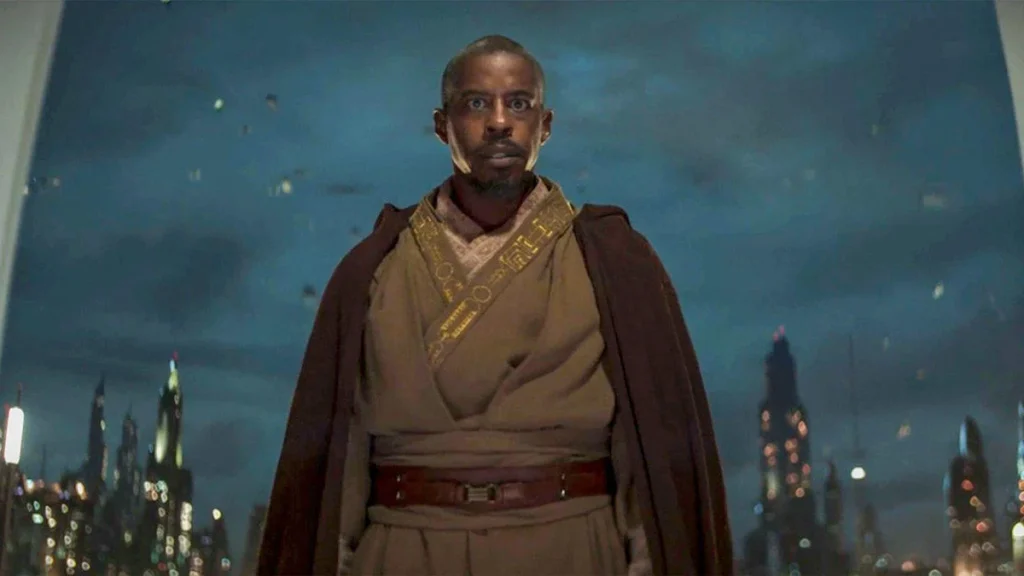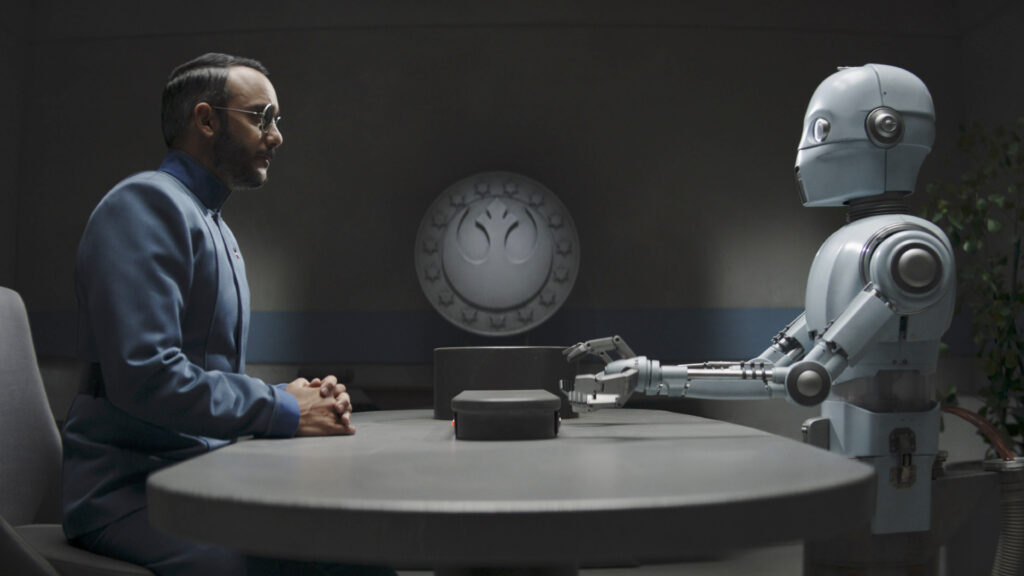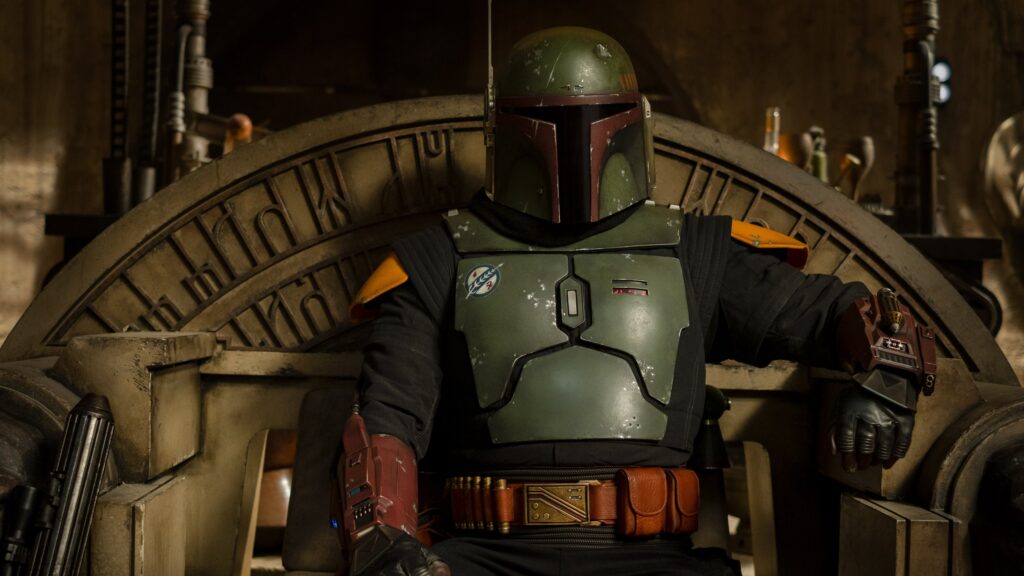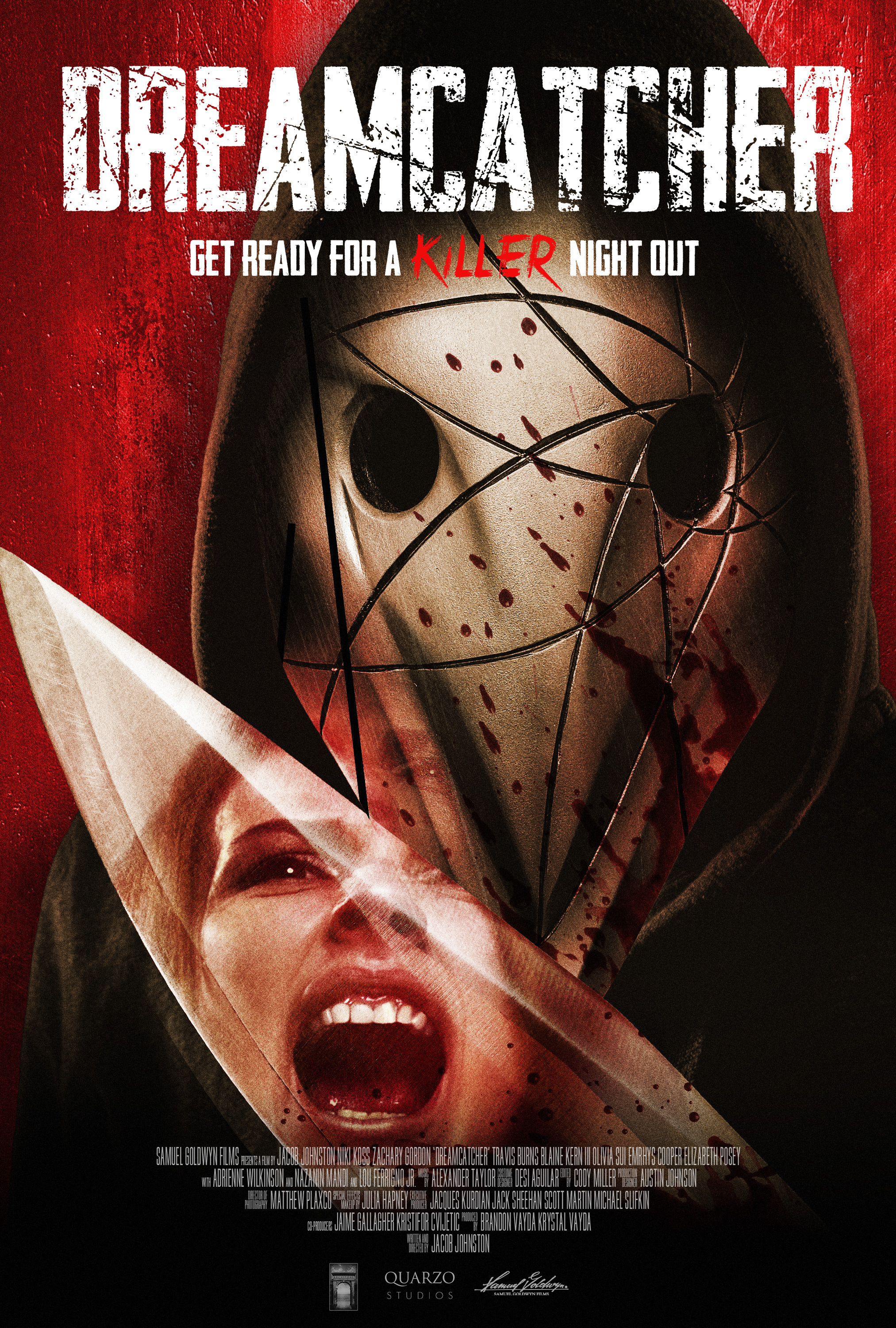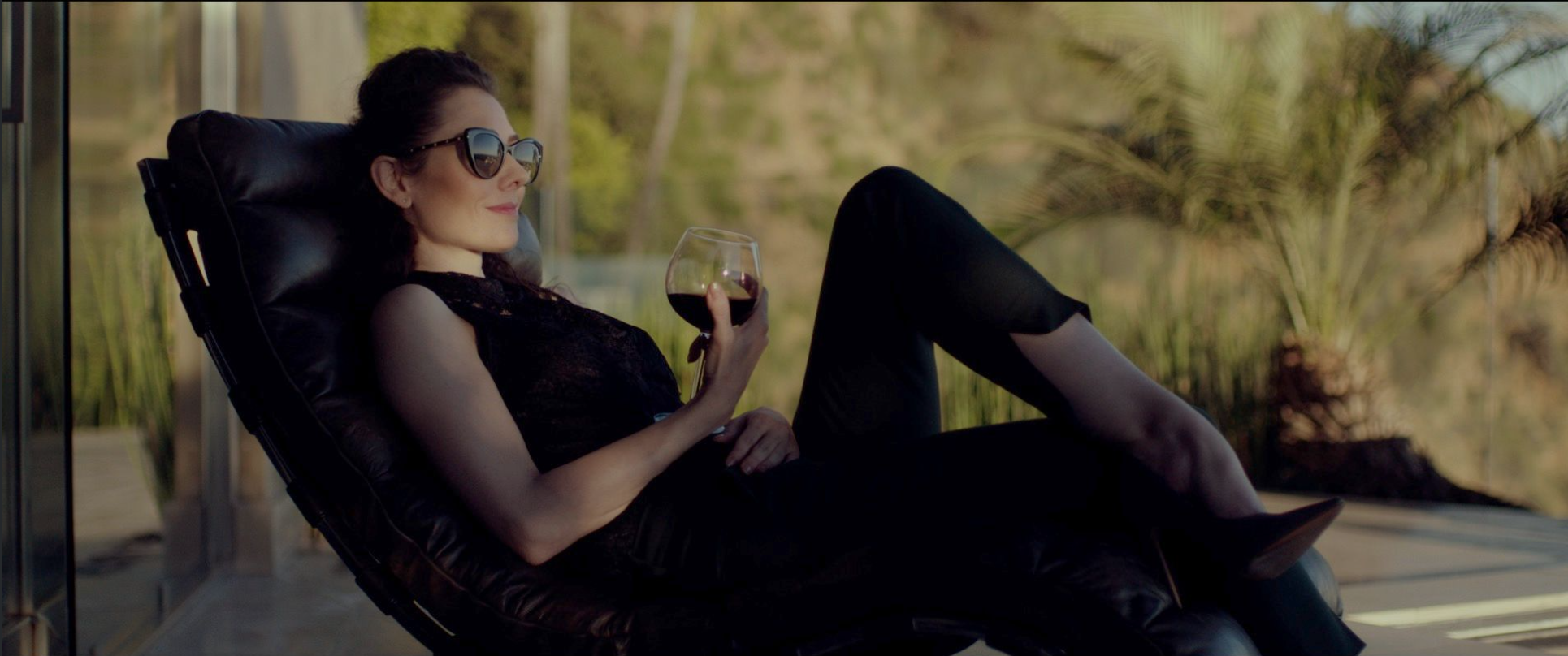The Mandalorian Season 3 Review: Chapter 24
Written by Ian Thomas Malone, Posted in Blog, Star Wars, TV Reviews
Last season’s finale reduced grown adults to tears, not simply for the nostalgia of deep fake Luke, but because the show had invested heavily in the arc of its characters. Season three began with a quest for Mando to take a bath because he once took off his helmet, only to conclude with the retaking of Mandalore and the radical rollback of his people’s fanaticism, reuniting with the sect of their religion that likes a little vitamin D on their faces. The show rarely seemed interested in cohesive plot progression, or the relationships between its lead characters.
To some extent, “Chapter 24: The Return,” might have been dead on arrival. The Mandalorians might be forgiven for not knowing there was some giant secret Imperial base on their homeworld, though no one seems to wonder what happened to the Tie Fighters who blew up Bo-Katan’s base on Kalevale back in the third episode of the season. For a warrior people, the Mandalorians don’t seem terribly interested in making plans.
We the audience, know nothing about their strategy. We didn’t even really know how many of them there were until the closing sequence of the episode, where maybe a hundred or so Mandalorians attended Bo-Katan’s celebratory bonfire. The show doesn’t need to stage a giant battle sequence that wouldn’t fit in the budget, but it also made no effort to explain why anyone would think leaving a single person aboard their Imperial Light Cruiser was a good idea, sacrificing their best ship to a handful of fighters.
Why did this happen? Who thought this was a good idea? Until last episode, the only times we’d seen groups of Mandalorians in action was in service to saving people in need. Heroism can carry a certain undercurrent of stupidity when you’re risking yourself to save others. These past two episodes have shown the Mandalorians acting like reckless fools for no higher purpose. No wonder they lost their homeworld. They don’t seem like very smart people.
The sheer recklessness of the Mandalorians undercuts the emotional turmoil of Mando seeing Grogu in danger. Mando was 100% complicit in the poor strategic planning that got them there. The fight sequence utilizing R5-D4 to operate the shields was some of the show’s most impressive choreography, though poorly served by the droid’s continued cowardly antics. In most other episodes, that battle alone could have carried the entire episode.
Everything wrong with Disney’s love of StageCraft was on full display with the air battle between the Mandolorians and the jet troopers. The frantic cinematography couldn’t do much to salvage the cheap special effects. The choreography conveyed no cohesive story, just blurs, and laser blasts. Everything felt cheap, rushed, and narratively empty.
The return of Moff Gideon was as anticlimactic as the destruction of the darksaber. It’s clear the show only brought him back because they needed something for the finale. The darksaber, rarely ever used on the show, served as little more than a plot device because the people who worked on The Clone Wars thought it would be fun to see on a live-action show.
There’s a certain irony in Gideon’s efforts to wield the force in an episode where a baby who abandoned his Jedi boarding school displayed an uneven relationship with his own abilities. The narrative trope of the child prodigy struggling with their gifts falls a bit flat when Grogu probably would have been better off training with Luke for most of the season instead of doing practically nothing with Mando. He could have even shown up at the finale like he did in The Book of Boba Fett, which would have actually given the show some weight.
The episode’s conclusion aimed to pack an emotional punch, but the narrative to adequately sell any beauty in Mando adopting Grogu. As rushed as things felt with Mando leaving Mandalore to live on Nevarro, an episode after the Mandalorians left Nevarro to live on Mandalore, three episodes after the Mandalorians left that unnamed desert planet to live on Nevarro, the closing scene accomplished one important objective. This show knows it’s time for a reset.
The season three finale was an embarrassing, sloppy conclusion to a season defined by narrative laziness. This show has lost its way. Thankfully the fix is rather easy, if only the writers could develop something resembling an attention span. Time will tell if viewers stick around to find out.





